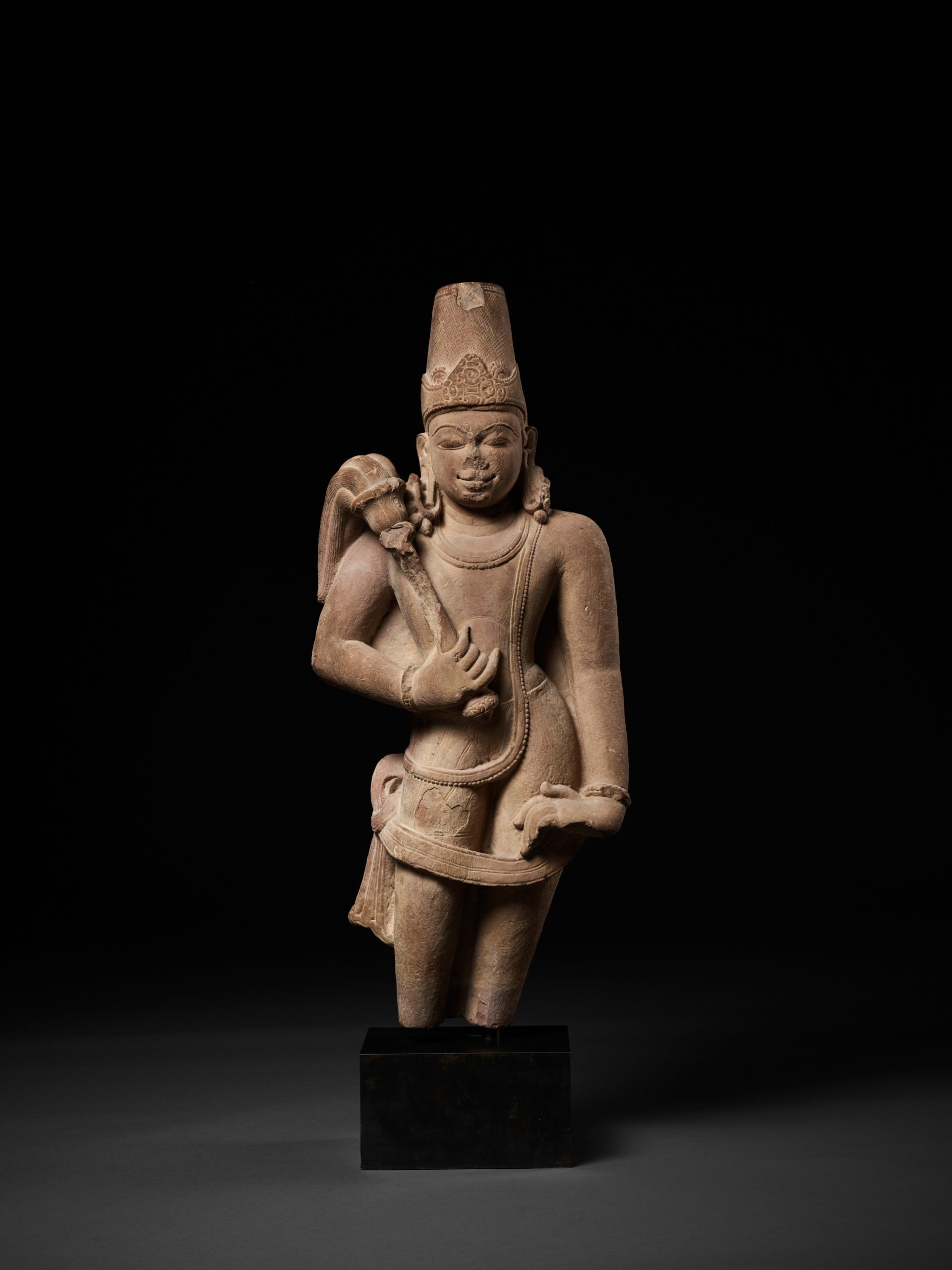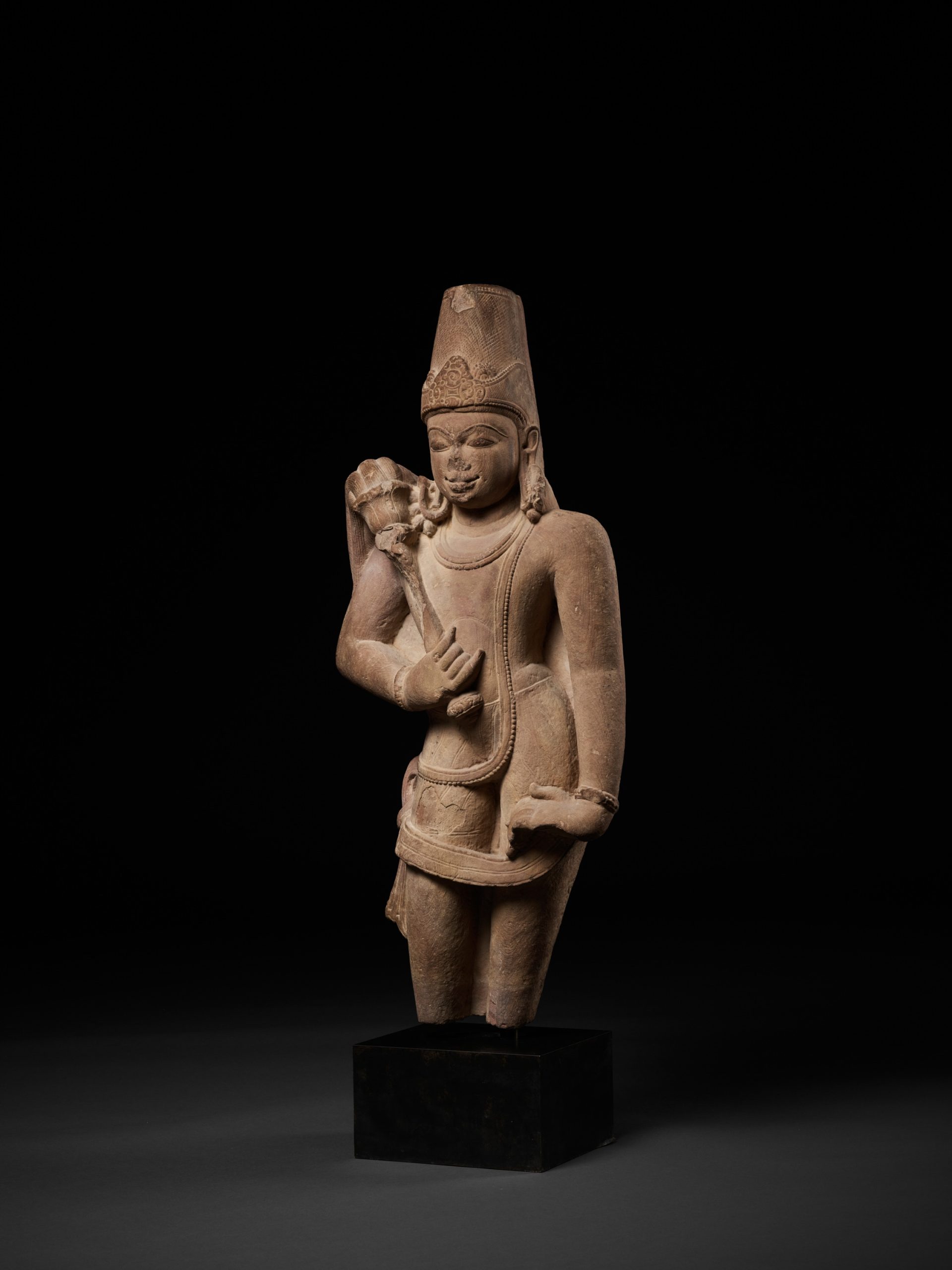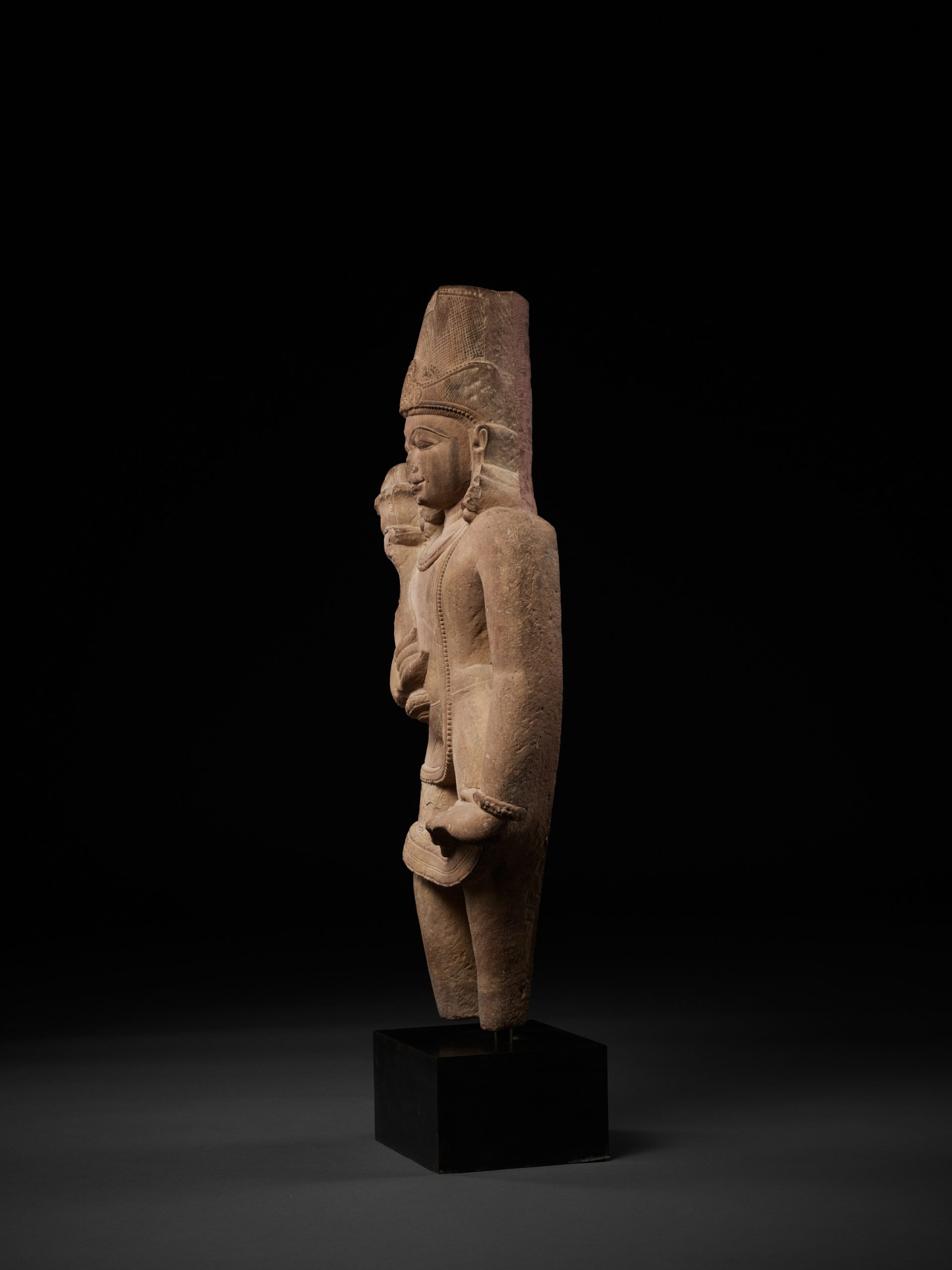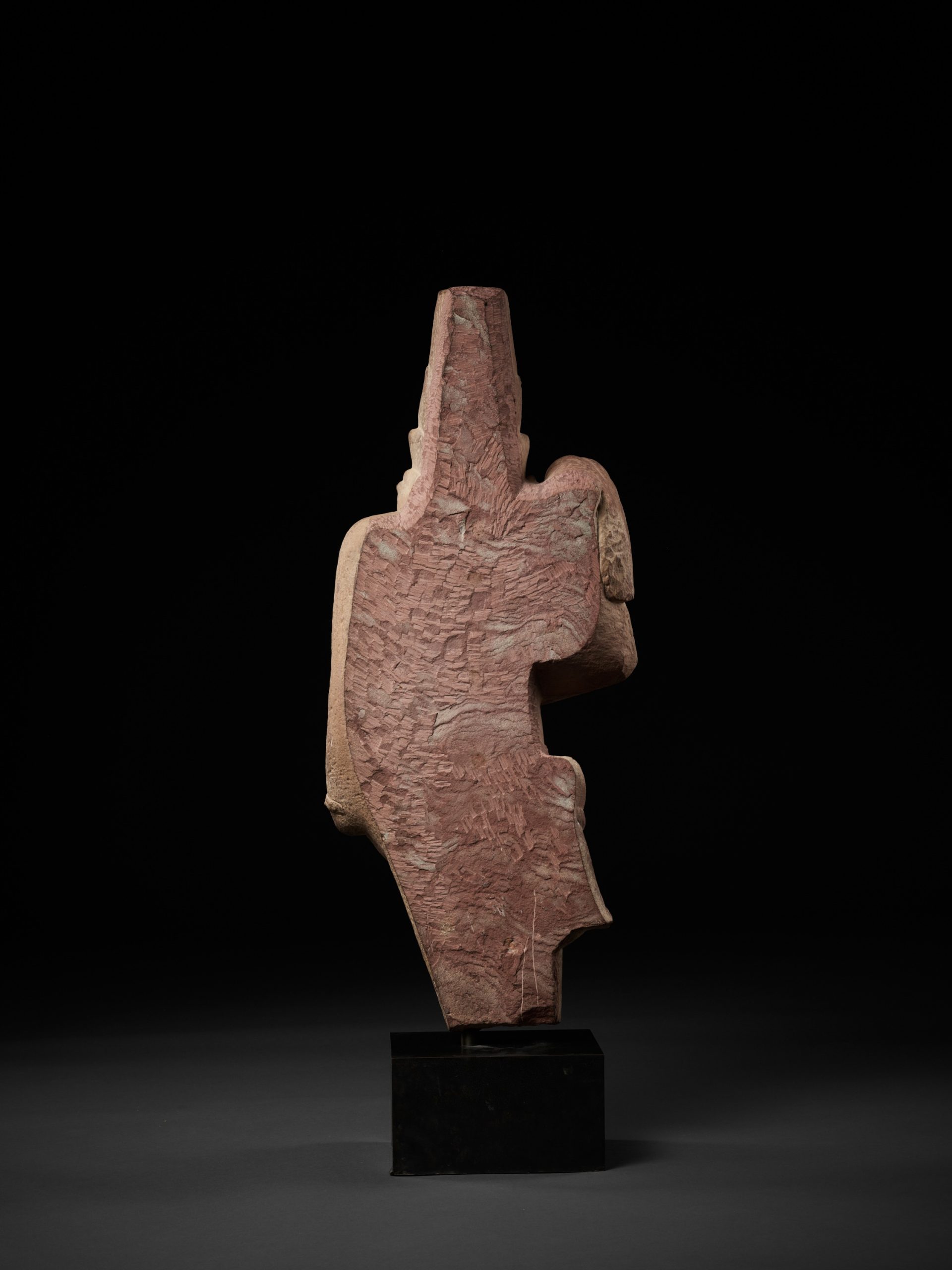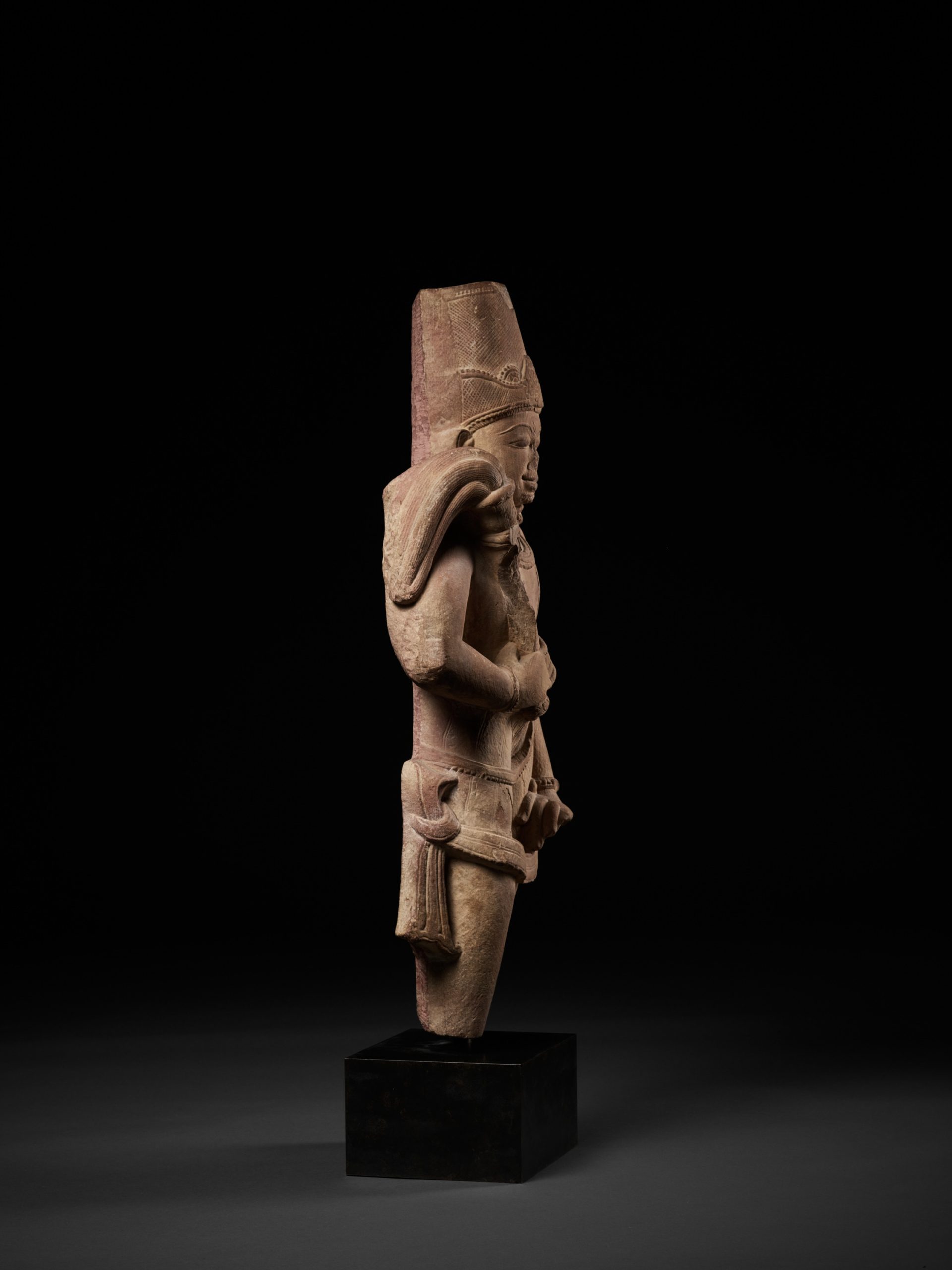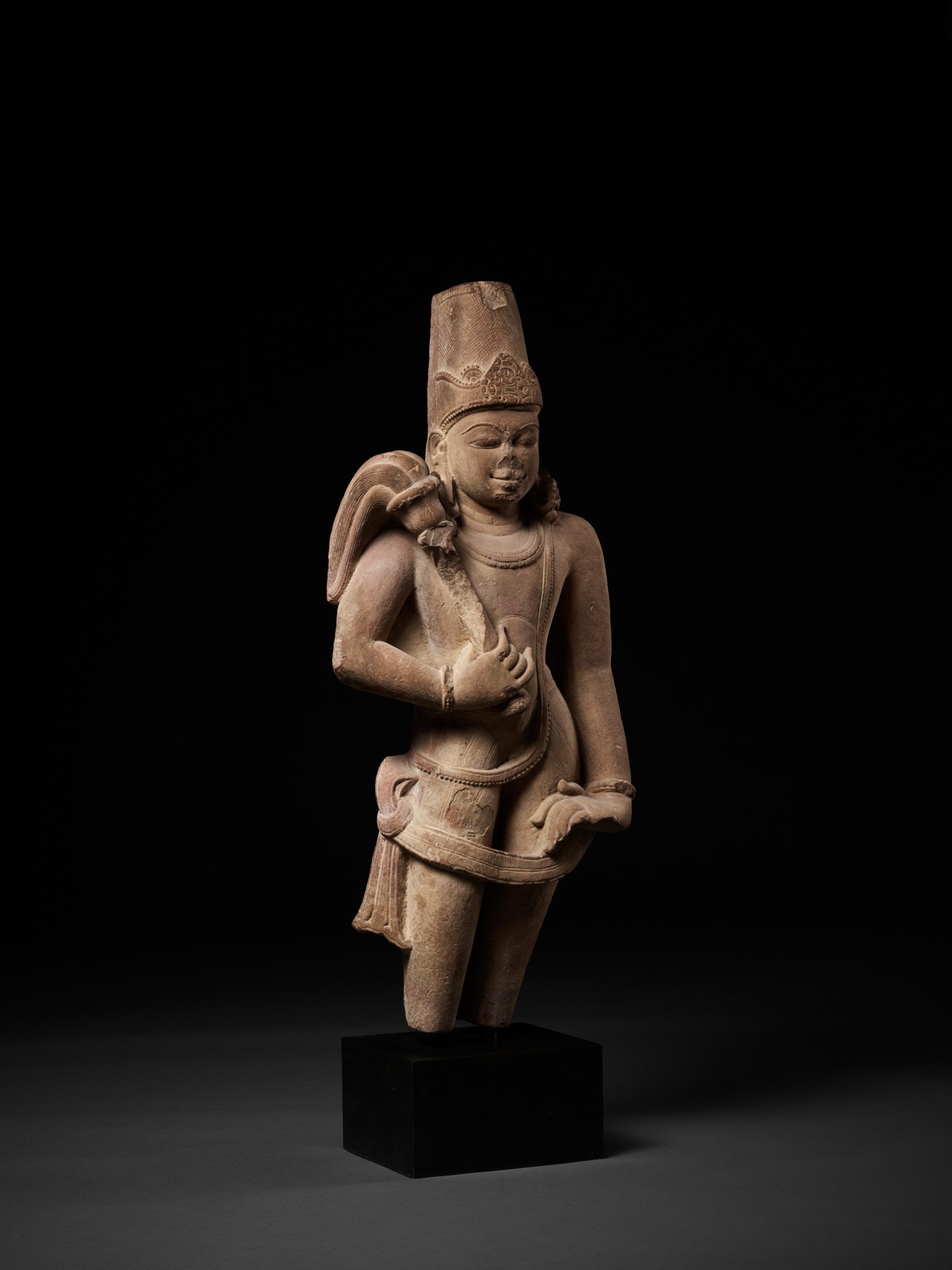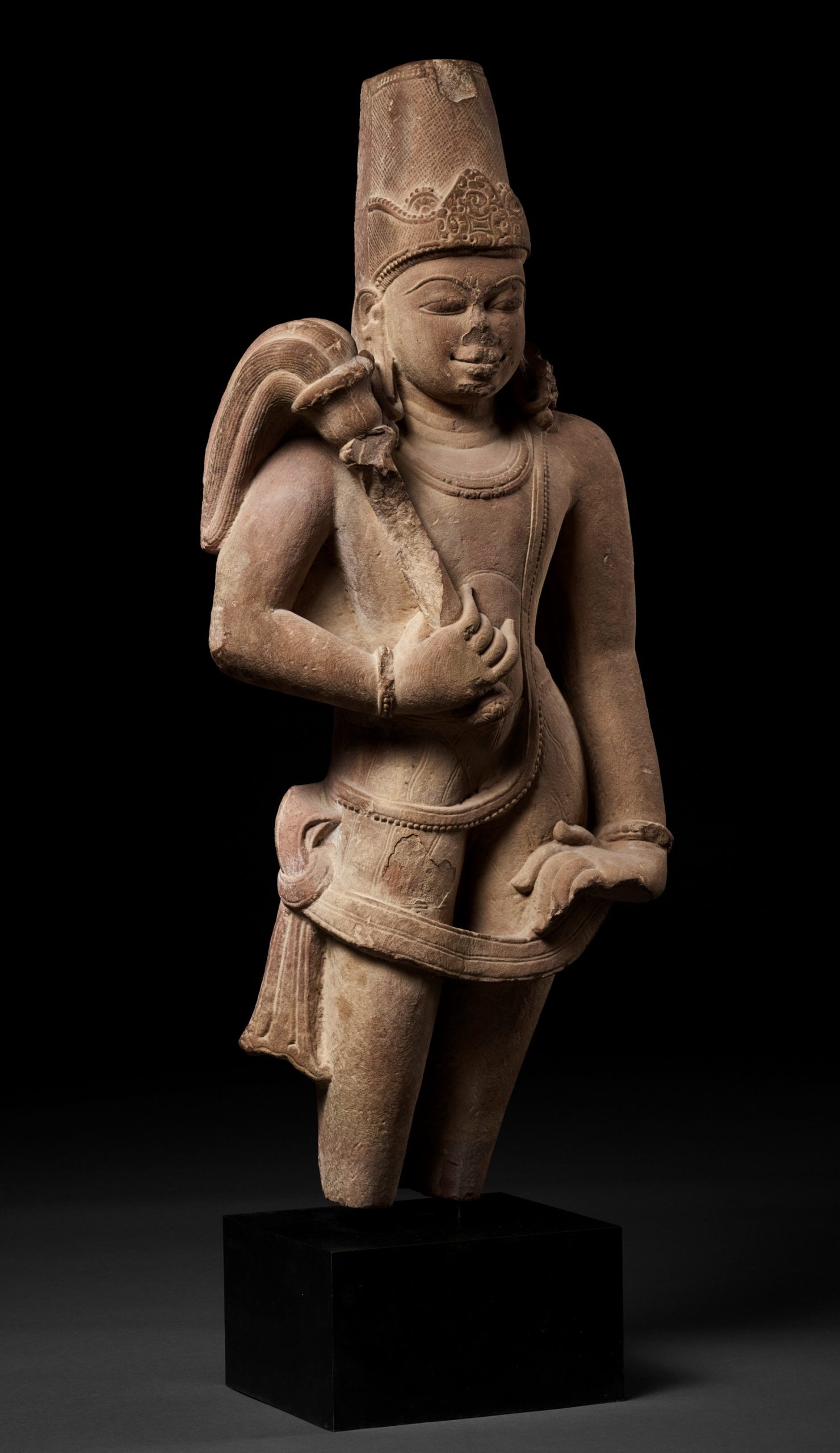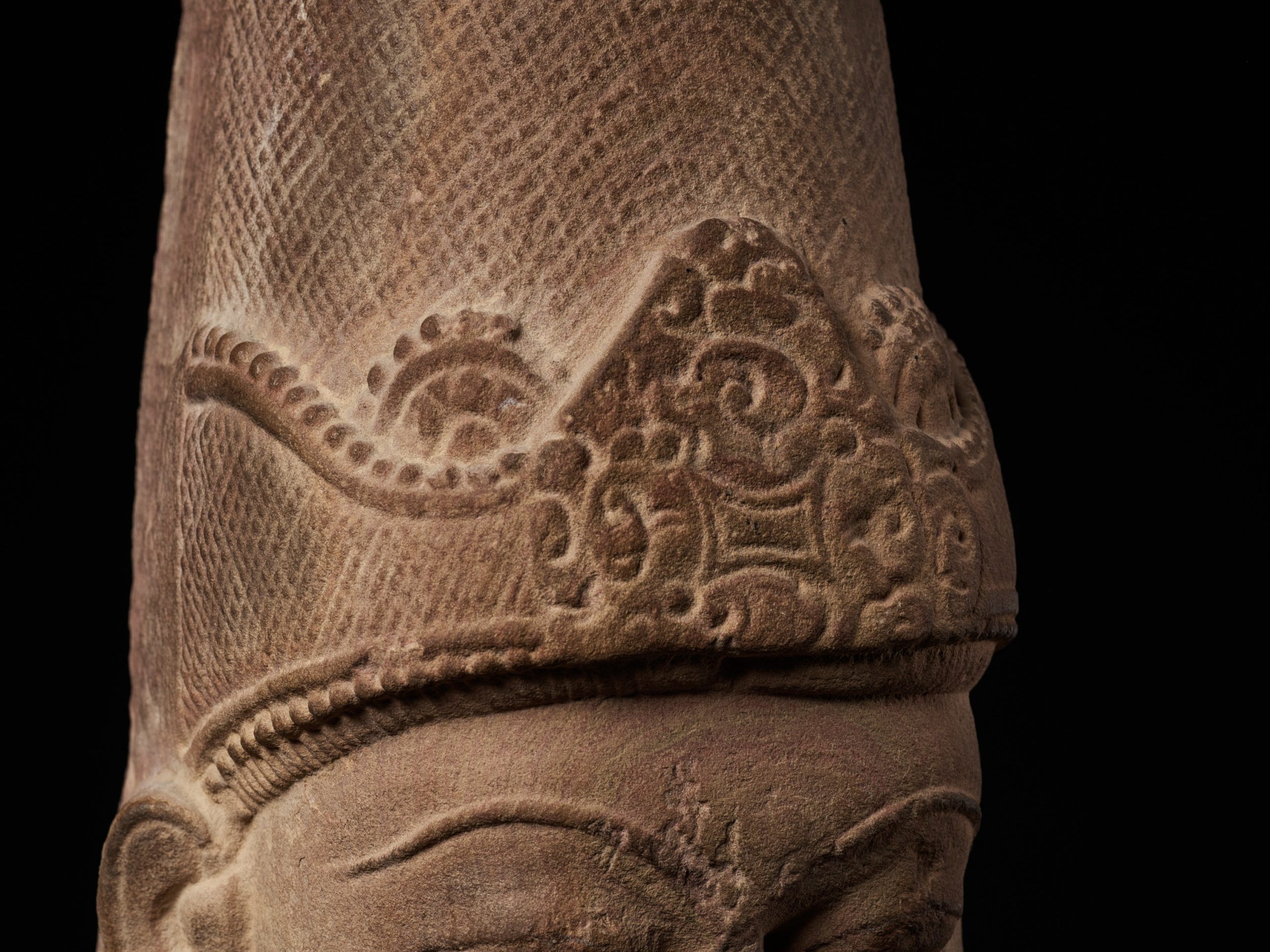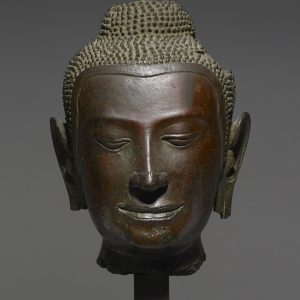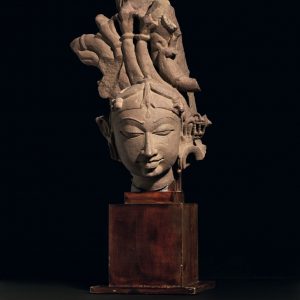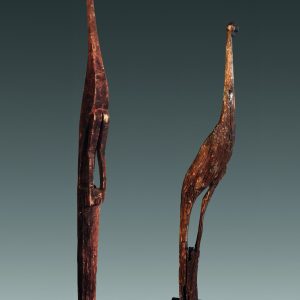Chauri Bearer
Sandstone
North India, Rajasthan
10th century
H: 102 cm (118 cm with base)
Description
A witness to artistic emulation in North India
The medieval period in North India was marked by a strong artistic emulation. Under the impetus of the Chandela rulers, a particular art developed, with rich and varied forms, particularly on the exterior of the temples, which often had a grandiose and highly decorative appearance. Wearing a high gold-plated tiara, this assistant is also adorned with bracelets and necklaces. These decorative elements contribute to the richness of the North Indian reliefs, and make this work a witness to the apogee of Chandela art. Depicted in a tribhanga pose, with a slight wiggle, this deity appears to be a celestial assistant to a more important god. He is holding a luxurious fly swatter, called a śauri, whose hair falls elegantly over his shoulder, and is wearing a short dhoti.
Chandela sculpture, the jewel of Indian art
Placed in consoles and sculpted in high relief, the sculptures are truly one with the masonry of the temples. Like this deity, the statuary art of the Chandela dynasty is admired for the virtuosity of its treatment of the bodies and the way they are presented to the eye. The sculptures are of great aesthetic interest, marking a major development in Indian statuary. The most beautiful examples are found on the site of the ancient capital Chandela, Khajurâho, which has delivered numerous temples with a complex plan, whose extraordinary sculpted decoration makes them a masterpiece of Indian architecture.
An art between sensuality and idealisation
Like the Chandela statues of Khajurâho, this divinity is remarkable for its supple plasticity. This sculpture perfectly embodies the canon of the medieval period in North India, where the emphasis is placed on the suppleness of the plastic and the idealisation of the features. Her face is also characteristic, with large almond-shaped eyes under arched eyebrows, and full lips with a slight smile. Her voluptuous body gives her an androgynous appearance, characteristic of Chandela statuary.
Provenance : Collection Michael Macmillan, 1976, then collection Denis O’Brien.
.

